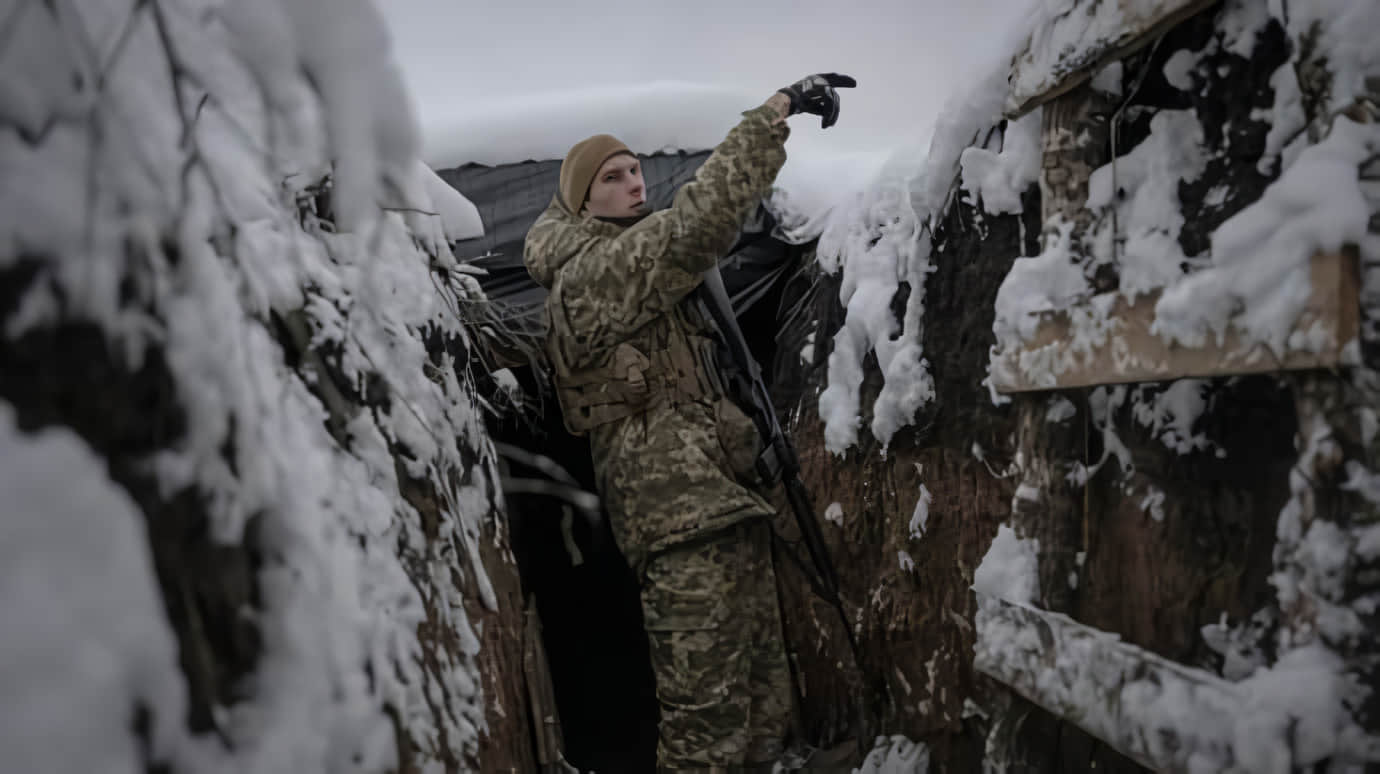Ukraine switches to defence: Reuters journalists visit new fortifications
Journalists have visited Ukraine's new defence lines in the country's east and reported on how the northern border is being reinforced. Source: Reuters Details: Reuters journalists visited Ukraine's new defence lines near Kupiansk on 27 December 2023.

Journalists have visited Ukraine's new defence lines in the country's east and reported on how the northern border is being reinforced.
Source: Reuters
Details: Reuters journalists visited Ukraine's new defence lines near Kupiansk on 27 December 2023. However, as Reuters noted, their exact location cannot be disclosed publicly for security reasons.
A military engineer who goes by the alias Yashchirka (Lizard) said that the defenders usually install dragon's teeth anti-tank obstacles, barbed wire, and then mines (if mines are laid at all) first.
"I believe most of these barriers should have been built much earlier, probably in the spring. It takes too much time," he said.
A few hundred metres beyond the dragon's teeth, work was underway to expand a network of wooden-beamed trenches for personnel, which also included living quarters and wooden bunk beds.
Another soldier who goes by the alias Rys (Lynx) believes that Ukraine is trying to minimise the use of mines for its fortifications in order to avoid leaving dangerous munitions on its territory.
"This is our land. We wouldn't want to litter it so much," he said.
According to military analysts cited by Reuters, the fortifications are being built to withstand Russian attacks and at the same time restore the strength of Ukrainian soldiers, as "Moscow takes the battlefield initiative".
According to Jack Watling, a senior research fellow in ground warfare at the Royal United Services Institute in the UK, stronger fortifications will slow down the advance of Russian troops and divert fewer Ukrainian forces to defend themselves. Thus, the latter would be able to do more training, for example.
"The Ukrainians are now shifting onto a defensive posture because their offensive has culminated," he said. He added that Russia had seized the initiative and was able to choose where to attack.
In Watling’s opinion, as Ukrainian artillery ammunition stocks are dwindling, Russian casualties are falling, making it easier for Moscow to form new units that could eventually allow it to open new lines of attack.
"On the Ukrainian side, they are trying to minimise their own casualties, but also regenerate offensive combat power," said Watling.
In his opinion, the fortifications can also be used to protect Ukraine's flanks when the Ukrainian Armed Forces launch the offensive again.
In addition, Reuters journalists visited trenches being dug with an excavator and shovels in Chernihiv Oblast near the Russian border.
"When the civilians have done their job (building the positions), we will densely mine it," Serhii Naiev, Ukraine's Joint Forces Commander who oversees the northern military sector, told reporters at the site.
Last month, Reuters reporters also visited the newly constructed Ukrainian trenches in Chornobyl near the border with Belarus.
Quote from Naiev: "(The works are ongoing) along the whole Northern Operational Zone. These works are currently underway in Sumy Oblast, Chernihiv Oblast, here on the Kyiv front.
Concrete structures, barbed wire, ... 'dragon's teeth' (concrete barricades)...; they will be mined, and barbed wire will be put on them. This will be a continuous concrete obstacle for armoured vehicles."
Background: At the end of November, President Volodymyr Zelenskyy announced that he had ordered the rapid building of fortifications on "all major fronts".
Support UP or become our patron!


